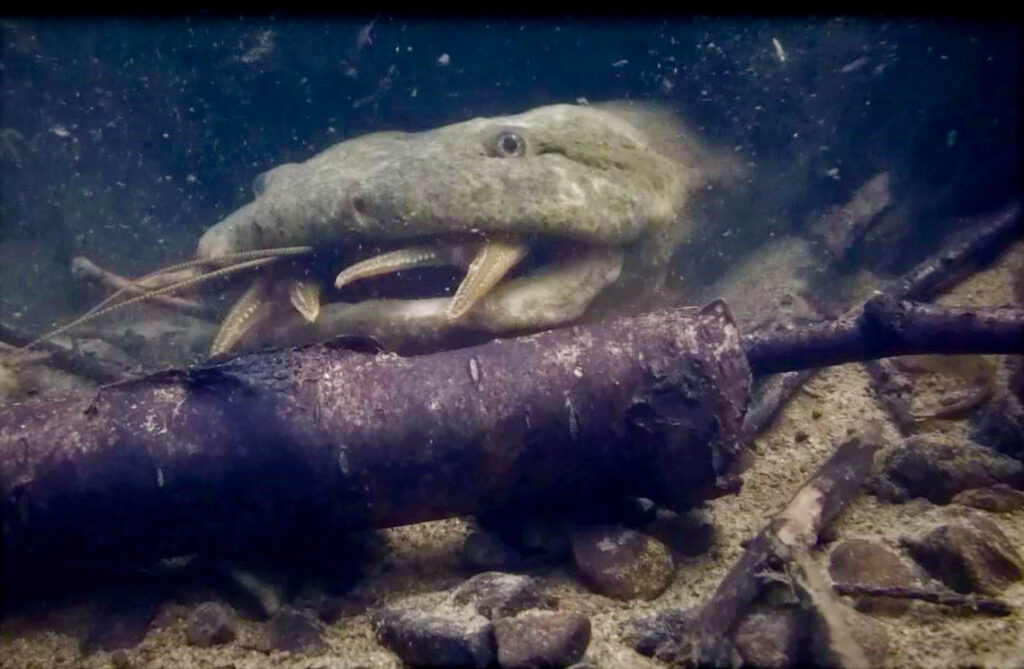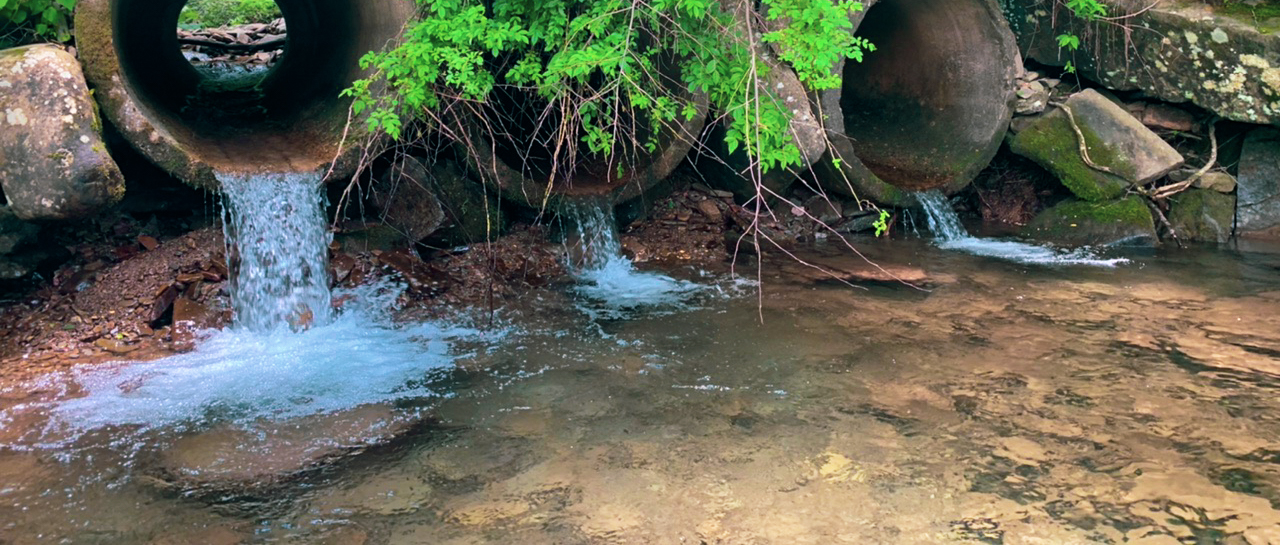Aquatic Organism Passage (AOP) is a restoration strategy that improves the connectivity of a stream or river system.
about aquatic organism passage
Manmade structures such as road crossings, dams, and culverts can act as barriers for aquatic species to move freely in a stream or river, isolating populations from one another or eliminating them from entire reaches.
This can have real consequences for our freshwater species in the Cheat and our tributaries, who may need to migrate large distances to find the best habitat for spawning and feeding, or in the Brook Trout’s case, to find cold water.
While some stream barriers occur naturally, such as waterfalls, human infrastructure has created a large amount of barriers on our streams in a relatively short amount of time, and has impaired the health of our aquatic populations.
It is widely accepted in the realm of Fisheries & Aquatic Biology that river and stream systems that are more connected tend to have healthier aquatic communities that respond better to ecosystem threats, making them more “resilient.”
Aquatic Organism Passage projects typically consists of completely removing an aquatic barrier, or replacing a crossing with larger sized culvert or bridge. These projects also reduce risk of damage and structure failure by allowing more water to flow through the structure in flood scenarios, rather than undermining the structure or eroding around it.
Albright Dam Removal

The Albright Dam exists approximately midway on the 78.3 mile long Cheat River, and is one of only two dams on the Cheat, the other being the hydropower dam that creates Cheat Lake.
The Albright Dam was built to feed the cooling towers of the Albright Power Station, which was permanently decommissioned in 2012, and serves no other purpose. Currently, the dam acts as a barrier for key species such as Walleye, Eastern Hellbender, and Brook Trout.

Walleye are native to the Cheat River and were historically found as far upstream as Parsons, WV. They were eliminated from the Cheat River in the 1940’s due to legacy pollution from acid mine drainage, but have since made a comeback in Cheat Lake and have moved into the Cheat River Canyon. Now, they have been documented just downstream of the Albright Dam, but have not been able to continue upstream.

Eastern Hellbender have been detected throughout the Cheat River, including upstream and downstream of the Albright Dam. Across their range, 80% of Eastern Hellbender populations have already been lost or are in severe decline (Center for Biological Diversity). Dams can act as a major threat as they can isolate populations from one another, and create poor habitat for Eastern Hellbender.

Similarly, Brook Trout are found in the nearby tributaries of Roaring Creek, Daugherty Run, and Elsey Run. In colder months, historically Brook Trout could use the Cheat River to migrate between tributaries. But with the dam in place, Roaring Creek is isolated from Daugherty Run and Elsey Run, making its population more vulnerable to environmental impacts.
Removing the Albright Dam would reconnect nearly 75 miles of the Cheat River, and allow sensitive species to move upstream and downstream as needed to fulfill their life cycle.
It would also allow humans to move freely on the river, opening a new seven-mile section for beginner flatwater paddling or fishing, and reduce a flood risk for the town of Albright.
Stream Crossing & Culvert Replacements
Friends of the Cheat is also working towards improving stream connectivity in our high quality headwaters.
The intersections of streams and roads can often cause problems for our aquatic species. Culverts that are undersized can often cause a “firehose” effect in high flows, creating a large scour pool and drop from the outlet of the pipe, and collects woody material and sediment at the inlet of the pipe. If enough material accumulates behind the structure, it may fail completely, causing damage to both the road and the stream.
Most species cannot swim through these structures, or may only be able to do so during a very short window of the year. This can have real consequences for species that need to migrate to find suitable spawning or feeding habitat or, like Brook Trout, colder headwaters. These structures can also isolate populations from one another, making them more vulnerable to environmental threats.
Many tributaries to the Cheat are high quality brook trout fisheries. Unfortunately, these populations are at risk to warming stream temperatures, which has already been documented in the region. A key strategy to making sure Brook Trout hold on these streams is making sure they are well connected, so that they can migrate freely to the cold conditions in the stream’s headwaters.
This is done by replacing the existing culvert or crossing with a larger culvert or bridge that allows for increased water flow and typically matches, at minimum, bankfull width (The water level at which a stream is at the tops of its bank). The structure is also placed appropriately so that stream bed material goes through the structure, eliminating any drop at the outlet.
Friends of the Cheat is currently working with private landowners, WV Division of Highways, and the US Forest Service to improve stream and road crossings in Tucker County. If you are private landowner looking to improve your stream crossing, contact Conservation Program Director, Madison Ball, at madison@cheat.org.

